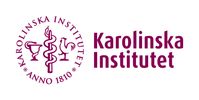Link between creativity and mental illness confirmed
People in creative professions are treated more often for mental illness than the general population, there being a particularly salient connection between writing and schizophrenia. This according to researchers at Karolinska Institutet in Sweden, whose large-scale Swedish registry study is the most comprehensive ever in its field.
Last year, the team showed that artists and scientists were more common amongst families where bipolar disorder and schizophrenia is present, compared to the population at large. They subsequently expanded their study to many more psychiatric diagnoses - such as schizoaffective disorder, depression, anxiety syndrome, alcohol abuse, drug abuse, autism, ADHD, anorexia nervosa and suicide - and to include people in outpatient care rather than exclusively hospital patients.
The present study tracked almost 1.2 million patients and their relatives, identified down to second-cousin level. Since all were matched with healthy controls, the study incorporated much of the Swedish population from the most recent decades. All data was anonymized and cannot be linked to any individuals.
The results confirmed those of their previous study: certain mental illness - bipolar disorder - is more prevalent in the entire group of people with artistic or scientific professions, such as dancers, researchers, photographers and authors. Authors specifically also were more common among most of the other psychiatric diseases (including schizophrenia, depression, anxiety syndrome and substance abuse) and were almost 50 per cent more likely to commit suicide than the general population. The researchers also observed that creative professions were more common in the relatives of patients with schizophrenia, bipolar disorder, anorexia nervosa and, to some extent, autism. According to Simon Kyaga, consultant in psychiatry and doctoral student at the Department of Medical Epidemiology and Biostatistics, the results give cause to reconsider approaches to mental illness. ”If one takes the view that certain phenomena associated with the patient's illness are beneficial, it opens the way for a new approach to treatment,” he says. ”In that case, the doctor and patient must come to an agreement on what is to be treated, and at what cost. In psychiatry and medicine generally there has been a tradition to see the disease in black-and-white terms and to endeavour to treat the patient by removing everything regarded as morbid.” The study was financed with grants from the Swedish Research Council, the Swedish Psychiatry Foundation, the Bror Gadelius Foundation, the Stockholm Centre for Psychiatric Research and the Swedish Council for Working Life and Social Research. Publication: 'Mental illness, suicide and creativity: 40-Year prospective total population study', Simon Kyaga, Mikael Landén, Marcus Boman, Christina M. Hultman and Paul Lichtenstein, Journal of Psychiatric Researchx, corrected proof online 9 October 2012.
Contacts
For further information, please contact:
Simon Kyaga, consultant in psychiatry, doctoral student
Department of Medical Epidemiology and Biostatistics
Tel: +46 (0)8-524 822 77
Email: simon.kyaga@ki.se
Paul Lichtenstein, professor
Department of Medical Epidemiology and Biostatistics
Tel: +46 (0)8-524 874 24
Email: paul.lichtenstein@ki.se
Contact the Press Office and download photos: ki.se/pressroom
Karolinska Institutet (http://media.ne.cision.com/l/iyzveolg/media.ne.cision.com/l/ysfiplli/media.ne.cision.com/l/dfkybllg/ki.se/) is one of the world’s leading medical universities. It accounts for over 40 per cent of the medical academic research conducted in Sweden and offers the country’s broadest range of education in medicine and health sciences. Since 1901 the Nobel Assembly at Karolinska Institutet has selected the Nobel laureates in Physiology or Medicine.
Subscribe to releases from Karolinska Institutet - English
Subscribe to all the latest releases from Karolinska Institutet - English by registering your e-mail address below. You can unsubscribe at any time.
Latest releases from Karolinska Institutet - English
Fluoride in drinking water is associated with impaired childhood cognition7.3.2025 15:30:00 CET | Pressmeddelande
Elevated concentrations of fluoride can occur in well water, and in some countries, it is added to drinking water to counteract caries in the population. A study from Karolinska Institutet in Sweden now supports a few previous studies indicating that exposure to fluoride during the fetal stage or early childhood may impair cognition in children. The study is published in the journal Environmental Health Perspectives.
Children with ARFID face increased risk of disease17.2.2025 17:00:00 CET | Pressmeddelande
Children with avoidant restrictive food intake disorder (ARFID) have an elevated risk of developing psychiatric and physical conditions, a new study from Karolinska Institutet published in JAMA Pediatrics reports. The study highlights the importance of early identification to improve care of these children.
Preterm babies receive insufficient pain management27.1.2025 15:29:17 CET | Pressmeddelande
A large proportion of babies born very early need intensive care, which can be painful. But the healthcare system fails to provide pain relief to the full extent. This is shown by the largest survey to date of pain in neonatal care, now published in the journal Pain.
New study paves way for immunotherapies tailored for childhood cancers20.1.2025 17:00:00 CET | Pressmeddelande
Researchers at Karolinska Institutet and the Astrid Lindgren Children’s Hospital in Sweden have determined how children’s immune systems react to different kinds of cancer depending on their age. The study, which is published in the journal Cell, reveals significant differences between the immune response of children and adults, and has the potential to lead to new tailored treatments for children with cancer.
AI can improve ovarian cancer diagnoses2.1.2025 11:00:00 CET | Pressmeddelande
A new international study led by researchers at Karolinska Institutet in Sweden shows that AI-based models can outperform human experts at identifying ovarian cancer in ultrasound images. The study is published in Nature Medicine.
In our pressroom you can read all our latest releases, find our press contacts, images, documents and other relevant information about us.
Visit our pressroom